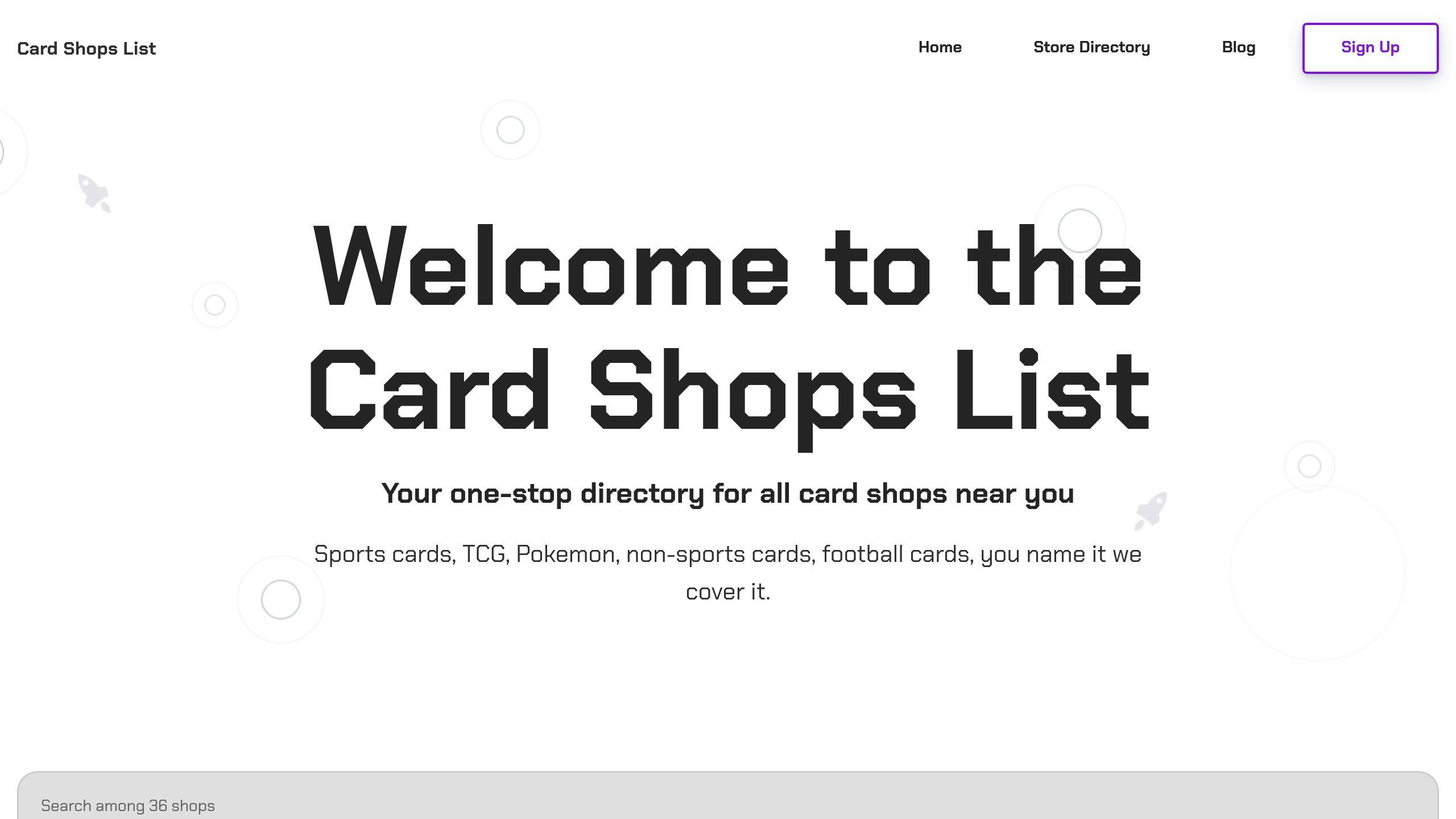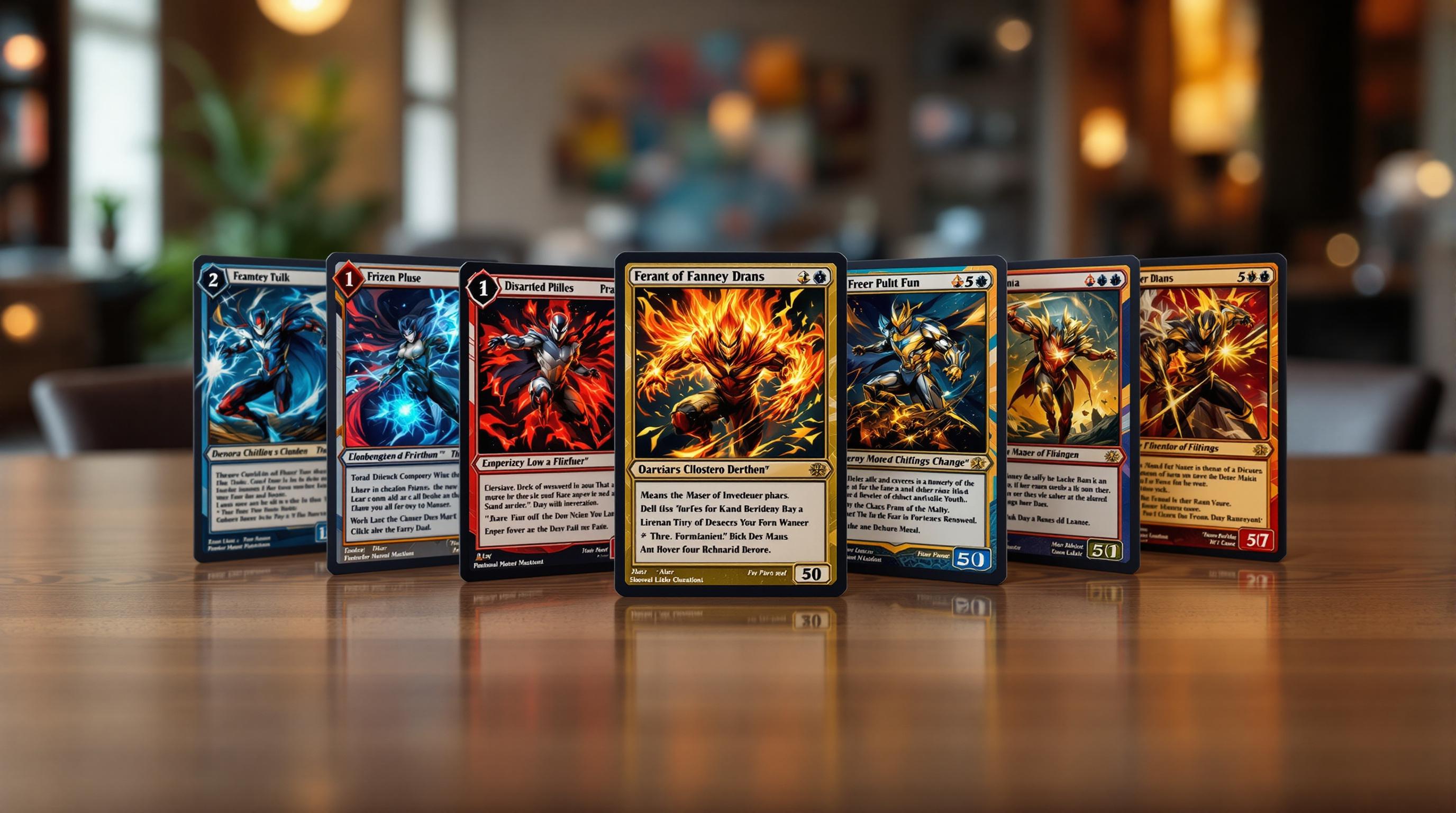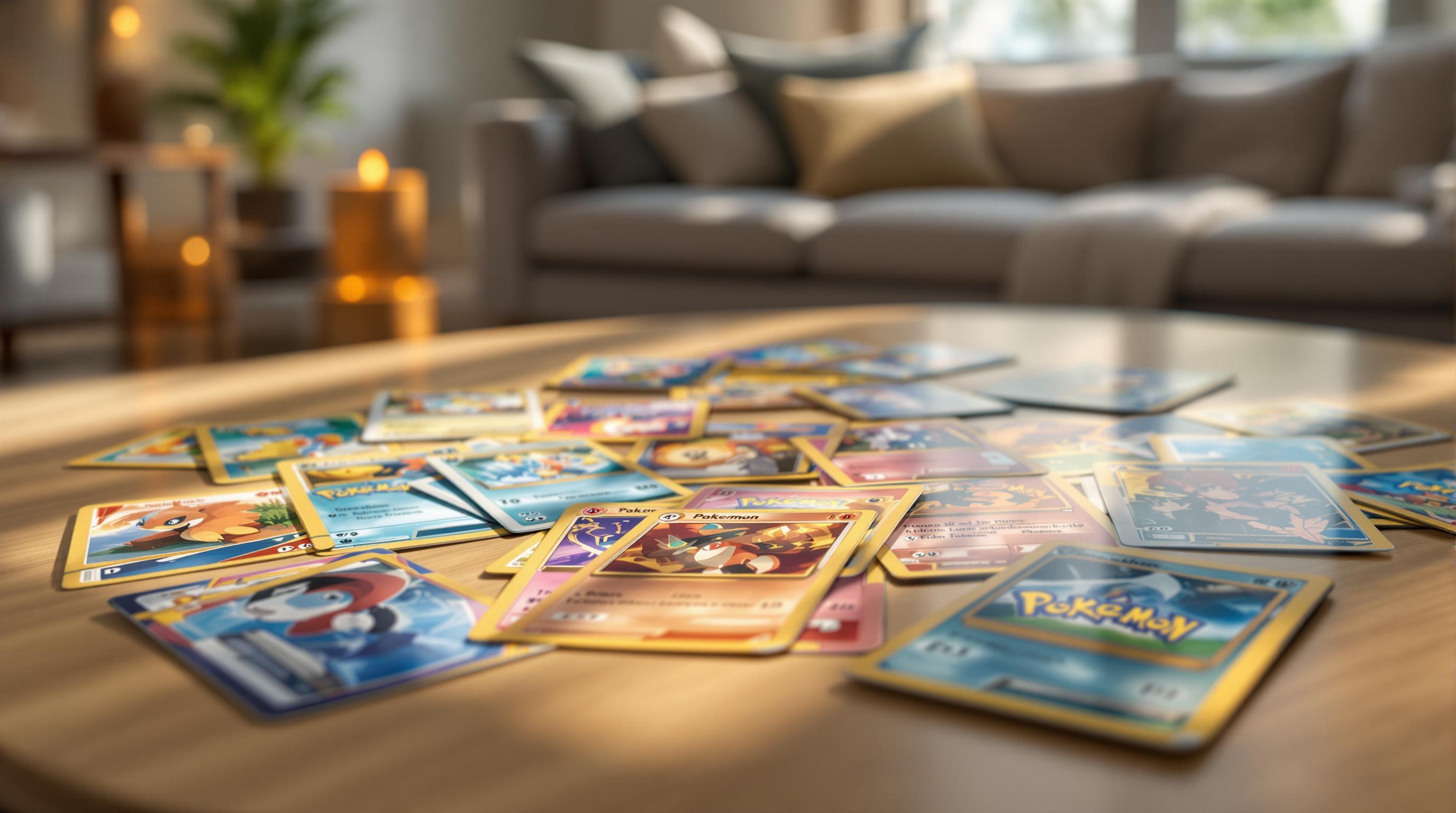Promotional cards can be rare and collectible, making them highly desirable for collectors. To identify valuable ones, focus on these key factors:
- Rarity: Look for cards tied to specific events or with limited print runs.
- Condition: Cards in mint condition (e.g., PSA 10) are worth more. Professional grading can help.
- Special Features: Unique artwork, holograms, autographs, or manufacturer seals often signal higher value.
- Market Trends: Use auction results, price databases, and local card shops to track demand and pricing.
To protect and increase a card's value, store it in protective sleeves, avoid exposure to sunlight and humidity, and consider professional grading services. Always verify authenticity by purchasing from trusted sellers or using authentication services.
Start with rarity, condition, and market research to make smarter collecting decisions.
How to Find Card Values - A Complete Guide
How to Identify High-Value Promotional Cards
Spotting promotional cards that could be worth a lot involves paying close attention to several key aspects. Here's what to look for when assessing a card's potential in the collecting world.
Rarity and Limited Production
A card's scarcity plays a huge role in determining its value. Cards tied to specific events or with historical importance often attract more interest. To gauge rarity, consider:
- Print Runs: Cards with smaller print runs are generally more sought after.
- Special Features: Look for cards with unique elements like autographs, jersey patches, or exclusive artwork, as their limited nature often drives up demand.
Condition and Professional Grading
The condition of a card is critical when it comes to maintaining or increasing its value. Cards graded as Gem Mint (PSA 10) command the highest prices, but even those with slight imperfections (PSA 9 or 8) can still hold considerable value.
Grading services such as PSA or BGS offer several benefits:
- Verified authenticity through third-party evaluation
- Standardized assessments of condition
- Secure storage in tamper-proof cases
- Increased appeal for buyers and collectors [1][2]
Tracking Market Trends
Staying updated on market trends is essential. Use these resources to keep an eye on values:
- Price Databases: Tools like the Beckett Database provide detailed pricing and historical data.
- Auction Results: Keep tabs on major auction platforms for real-time pricing insights.
- Specialty Retailers: Local card shops (findable through resources like Card Shops List) often offer expert opinions and trend updates. [2][3]
Market demand can shift due to factors like player performance, the need to complete sets, seasonal interest, or even a card's usefulness in tournaments.
After identifying cards with strong potential, your next move should be verifying their authenticity and assessing their market value.
Steps to Evaluate Promotional Cards
Evaluating promotional cards involves a careful process to ensure you understand their value and authenticity. Here's how to approach it.
Look for Special Features
Pay close attention to specific details that can signal a card's value:
- Print Quality: Check for vibrant colors, sharp images, and consistent printing.
- Signature Verification: Look for official stickers or stamps that confirm the signature is real.
- Security Features: Inspect for holograms or seals unique to the manufacturer.
- Production Markings: Identify any unique symbols or identifiers that highlight the card as a promotional release.
Confirm Authenticity
Ensuring a card's legitimacy is essential to avoid losing money on counterfeit items. Here's how to do it:
- Compare the card's texture and weight against known authentic examples.
- Verify manufacturer-specific security features, such as holograms or seals.
- Buy only from trusted sellers with a solid reputation.
- For high-value cards, consider professional authentication services.
"Collectors can confirm authenticity by purchasing from trusted sources, such as reputable card shops listed on Card Shops List, and by checking for official seals or holograms from the card manufacturer" [2].
Compare Market Prices
Understanding a card's market value is key. Use these resources for a better price estimate:
- Auction sites to see recent sales and trends.
- Grading services for professional evaluations.
- Local card shops for expert advice and insights.
- Focus on completed sales rather than listed prices to get a realistic sense of value.
For rare or high-value promotional cards, consulting experienced dealers can offer insights beyond what online research provides.
Once you've assessed the card's value, the next step is to protect it, ensuring its worth is preserved or even grows over time.
sbb-itb-0db97a5
Ways to Protect and Increase Card Value
Keeping promotional cards in great shape is key to maintaining and even boosting their worth over time.
Store Cards Safely
To keep your cards in top condition, proper storage is a must. Here are some tips:
- Store them in a cool, dry place, away from sunlight, and ensure the temperature and humidity stay consistent.
- Use protective sleeves and top-loaders for individual cards.
- For high-value cards, consider hard plastic cases for extra security.
For the best protection, try the inner-and-outer sleeve method: first, place the card in a snug, perfect-fit inner sleeve, then add an outer sleeve. This shields the card from dust, moisture, and accidental handling damage.
Once your cards are safely stored, you might want to think about professional grading to further boost their value.
Use Grading Services
Getting your cards graded by trusted companies like PSA or Beckett can significantly increase their worth. Grading involves assessing the card's centering, surface quality, corners, and edges to provide a standardized condition score.
"Professional grading can increase a card's value by up to 50% compared to ungraded cards, depending on the condition and rarity" [2].
Grading not only verifies the card's condition but also its authenticity, making it more appealing to serious collectors.
Stay Informed About New Releases
Knowing what's coming next in the card world can help you spot future gems. Stay updated by:
- Joining collector communities and forums to exchange insights.
- Using price guides to monitor market trends.
- Keeping an eye on specialty retailers and marketplaces.
For reliable grading services and trustworthy dealers, directories like Card Shops List can guide you to reputable places for card evaluation and trading.
Conclusion: Collecting Promotional Cards Wisely
Key Points to Keep in Mind
Building a collection that holds its worth requires focusing on a few crucial elements. A card's value is shaped by its rarity, condition, and demand in the market. For instance, the Monkey D. Luffy (P-001) Promo card, valued at $2,820, highlights how limited availability and pristine condition can greatly influence its price [5].
When assessing promotional cards, pay attention to black star symbols, which signify rarity. These cards are typically more sought after compared to common (circle) or uncommon (diamond) ones [4]. This knowledge is essential for making smarter purchases and growing a meaningful collection.
The Role of Tools Like Card Shops List

Having access to trustworthy resources is crucial for buying, selling, and evaluating promotional cards. Platforms like Card Shops List connect collectors with reliable shops offering services like grading, authentication, and trading. These shops not only help verify a card’s authenticity but also provide insights into market trends, making them invaluable for collectors.
Using these resources can help you make better decisions and improve your chances of creating a collection with lasting value.
Advice for Collectors
Building a strong collection requires patience and care. Focus on maintaining your cards in excellent condition, learning about their unique traits, and working with trusted dealers. By sticking to these practices, you'll be in a better position to spot and acquire cards that have the potential to grow in value.
Understanding the key drivers of value - rarity, condition, and demand - will give you the confidence to make smarter choices as you expand your collection.
FAQs
Here are answers to some common questions collectors have about identifying, valuing, and preserving promotional cards.
How can I identify and evaluate rare promotional cards?
Pay attention to these details:
- Star symbols: Black or white stars often indicate rarity.
- Holographic patterns: Foil designs typically suggest higher value.
- "PROMO" text: Cards with black star promos and "PROMO" text are often sought after [6].
When evaluating value, consider these factors:
| Factor | Impact on Value | Example |
|---|---|---|
| Limited Production | Scarcity increases demand | Monkey D. Luffy (P-001) Promo card [5] |
| Condition Quality | Mint condition adds value | CGC Cards provides professional grading [4] |
| Special Features | Unique traits boost appeal | Trafalgar Law (OP05-069) Manga Rare [5] |
How can I protect my valuable cards?
For detailed tips, check the earlier section on card storage. Here are some quick suggestions:
- Use protective sleeves and sturdy cases.
- Consider professional grading services for added protection and value.
- Store cards in stable environments with controlled temperature and humidity [4].
Where can I verify card authenticity?
Trusted resources like grading services or reputable shops are your best options for authentication.
"Card Shops List connects collectors with reliable shops offering services like grading, authentication, and trading. These shops not only help verify a card's authenticity but also provide insights into market trends."
What common mistakes should I avoid?
Be mindful of these pitfalls:
- Misinterpreting rarity symbols.
- Ignoring small but critical damage.
- Relying on just one or two pricing sources.
These FAQs aim to help collectors make smarter choices when assessing and protecting their promotional cards.


